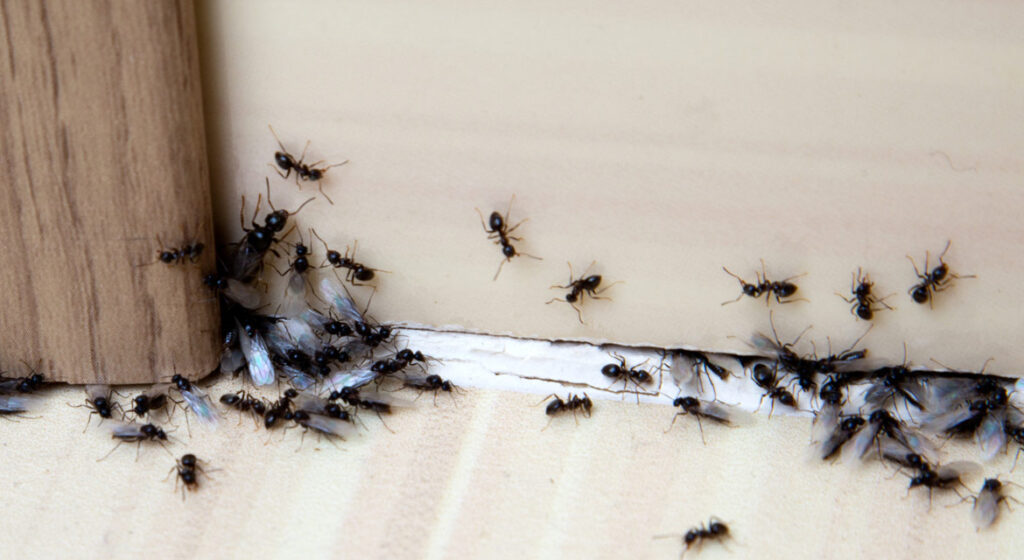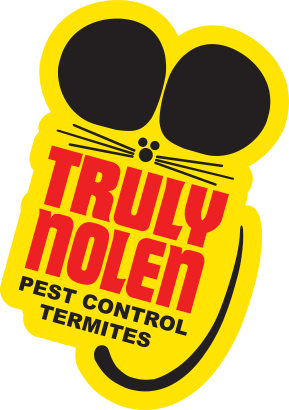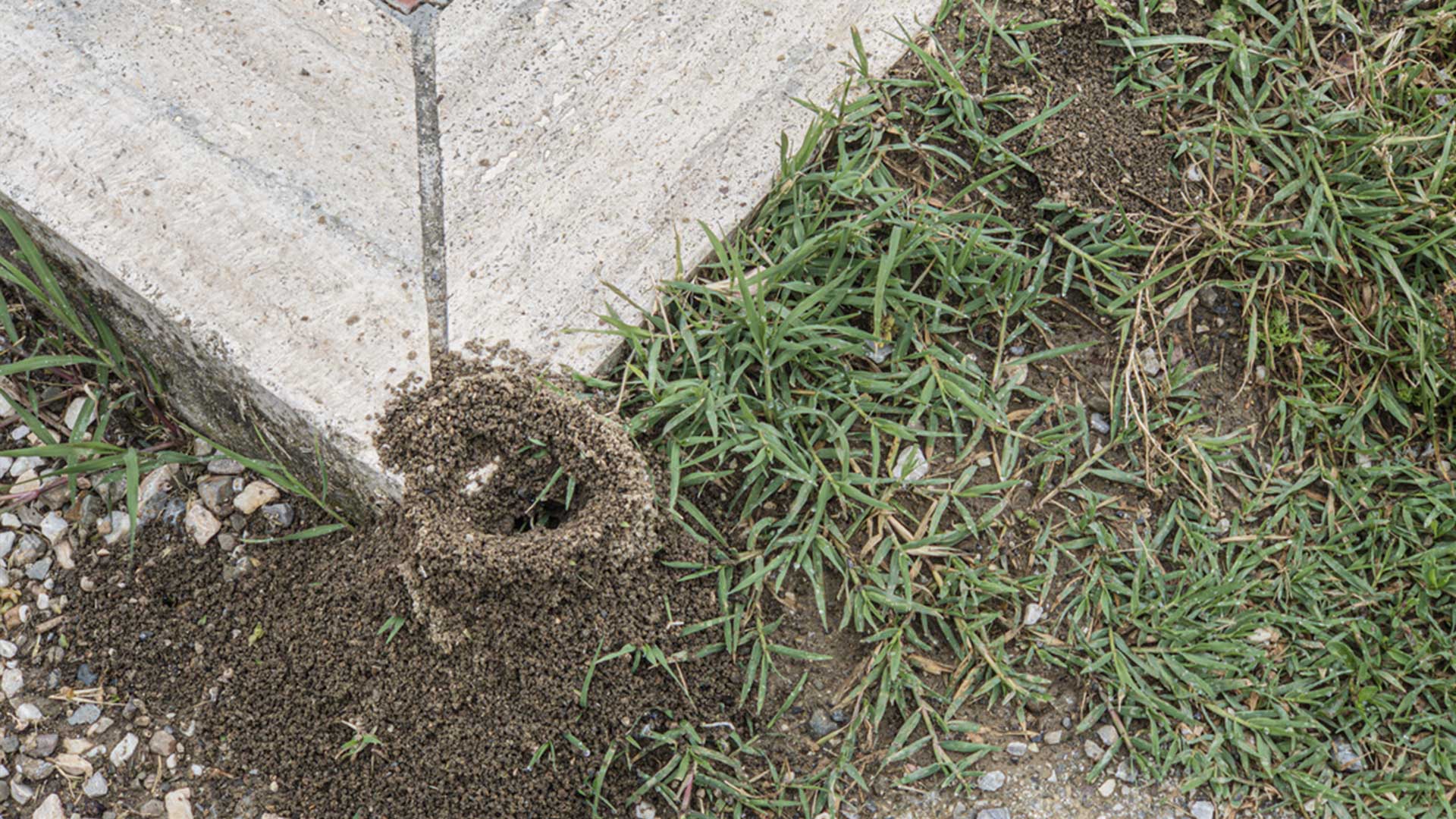
Can Ants Cause Structural Damage to My House?
Ants are common household pests that can easily enter your home and cause many problems. Some ants can even pose a threat to the structural integrity of your house. Preventing ant infestations is crucial to avoid structural damage to your home.
Continue reading this article to learn all about the types of ants that can damage your home and how to prevent them.
Types of Ants Most Likely to Cause Damage
Ants are social insects that forage for food and build nests to protect their colony. Their food search can lead them to your house, where they may establish satellite colonies and begin to cause damage.
Some ant species are more like to cause damage than others. Here are the most common types of ants to watch out for.
- Carpenter ants: These are the most well-known ants that can cause structural damage. They build their nests inside wooden structures like walls, floors, and ceilings. Over time, their nests weaken the wood and compromise the structural integrity of your home. Carpenter ants can be black, brown, or reddish and grow up to 1/2 inch long.
- Pavement ants: As their name suggests, you will typically find pavement ants nesting in the cracks of sidewalks and driveways. However, they can also build nests inside walls and other areas of your home. Pavement ants can be black or brown and are about 1/8 inch long.
- Odorous house ants: These ants get their name from the strong odor they emit when crushed. They are attracted to sweet and greasy foods, and extremely large numbers can enter your home through cracks and openings. Odorous house ants can be brown or black and are about 1/16 to 1/8 inch long.
Once these ants have established a colony, it can be challenging to eradicate them yourself. Professional pest control companies can identify the ant species, use effective treatments to eliminate the infestation, and ensure your home remains structurally sound.
Now, we will look at the three most common damage-causing ant species in greater detail.
Carpenter Ants
Carpenter ants are a major pest that can cause serious damage to wooden structures in homes and buildings. They are social insects and have a hierarchical structure. You will find the parent colony located outside on a tree stump or other wooden debris. Satellite colonies are often located inside houses and connected to the parent colony via a network of trails.
One of the most significant signs of a carpenter ant infestation is the presence of smooth tunnels in the wood. Additionally, piles of sawdust around wooden structures are a telltale sign of carpenter ants. They create these piles when excavating wood to create or enlarge their nests.
To prevent carpenter ant infestations, you must keep any food sources that may attract these ants, such as pet food, kitchen scraps, and sweet foods, from sitting out for long periods. Additionally, removing tree stumps and other wooden debris from your property can help prevent the parent carpenter ant colony from establishing itself on your premises.
If you have noticed signs of carpenter ants in your home or on your property, don’t wait until the ants have caused extensive damage. Take action at the first sign of a carpenter ant colony and protect your home’s structural integrity and your family’s health.

Truly Nolen GUARANTEE
If you’re not completely satisfied, you’ll get a full refund on your most recent service with our 100% money back guarantee.

$50 Off Year Round Pest Control
Truly Nolen is a family-owned company with 85 years of experience providing the best pest control. If you’re not completely satisfied, you’ll get a full refund on your most recent service with our 100% money back guarantee.
Pavement Ants
Pavement ants are a common household pest found all over North America. You will often see these small, black ants marching in a line along sidewalks, driveways, and other paved surfaces. While pavement ants do not always make it inside our houses, they can significantly damage the sand and gravel outside. The structure’s foundations will be unsound if you attempt to put slabs and patios on that damaged grit and sand.
In addition to the damage they cause outside, pavement ants build their nests near the foundations of homes. They can then enter homes through cracks in walls, floors, or around doors and windows. Once inside, they can create satellite colonies in wall voids or elsewhere in the house.
While pavement ants do not threaten structural integrity when they nest inside your home, they can still cause damage. For example, if they nest in wall insulation, they can damage or destroy it, reducing its effectiveness. Pavement ants can also contaminate stored food and create unsightly mounds of soil along sidewalks and driveways.
If you suspect a pavement ant infestation, it is best to call a professional pest control company to handle the problem.
Odorous House Ants
Odorous house ants, or sugar ants, are a common nuisance pest in homes. These ants are attracted to sweet or sugary substances, hence their name, and often invade kitchens and pantries for food. The sheer number of odorous house ants that can invade your home is as impressive as it is annoying. Therefore, you should take any sighting of an odorous house ant seriously.
While odorous house ants do not threaten the structural integrity of your home, they can still contaminate food sources. The large numbers of their colonies can also be unsightly. Plus, they release an extremely bad smell when crushed.
One of the challenges in dealing with an odorous house ant infestation is locating the nest. These ants may have multiple nests in your home, making it difficult to eliminate them without professional help. With timely and effective treatments, you can minimize the damage and annoyance caused by these pesky ants.
Signs of an Infestation
Ants are common in and around homes, but when their numbers grow too large, they can become a nuisance and even cause structural damage. Therefore, you must be able to recognize the signs of an ant infestation before it becomes a major problem.
You likely have an ant infestation if you notice the following signs.
- Ants: One of the first signs of an ant infestation is the presence of the actual ants. Seeing ants in your home could signify a nearby colony or nest.
- Trails: Ants leave a scent trail behind them as they search for food, which leads other ants to the food. If you notice a line of ants moving in a line across your floor, that could be a sign that they have found a food source in your home.
- Debris: Ant debris, such as sawdust piles or swarmers’ discarded wings, can also indicate an ant problem. Carpenter ants, for example, create smooth tunnels in wooden structures and often leave piles of sawdust as they excavate the wood. Also, piles of wings around your home could indicate that the winged ants, called swarmers, have made your home their own.
- Damage: Finally, if you notice damage to wooden elements or walls in your home, you could have an ant infestation. Carpenter ants, in particular, can cause extensive damage to wooden structures.
Satellite Colonies
The problem with ant infestations is that you often have more than one colony to deal with. There will be a large, or “parent,” colony and then smaller, satellite colonies. You can find the satellite colonies some distance away from the parent colony, which establishes these smaller colonies to serve as outposts for foraging or as a place to relocate if needed.
Satellite colonies can be just as problematic as the main colony, and sometimes even more so. Each satellite colony can house hundreds or even thousands of ants, depending on the species.
One of the main concerns with satellite colonies is that they can remain hidden for a long period. It is common for homeowners to think they have successfully gotten rid of an ant infestation, only to find new ants showing up a few weeks or months later. So, to properly address an ant infestation, you must identify all the satellite colonies as well as the parent colony.
Effective over-the-counter treatments for satellite colonies may include baiting systems, which employ specially formulated bait that ants bring back to the colony, killing the entire population. Professional pest control companies can also help locate and eliminate satellite colonies using specialized tools and techniques.
Evidence of Nesting in Wood Structures
As social insects, ants are known for their ability to work together and create elaborate colonies. Unfortunately, these colonies often seek out wooden structures as prime nesting locations. Carpenter ants, in particular, are notorious for creating nests in wood, causing extensive and costly damage.
So, how can you tell if carpenter ants are nesting in your wood structures? Look for the following signs.
- Piles of sawdust around baseboards, windowsills, or door jambs
- Small holes or openings
- Hollow-sounding wood
- Tunnels through structural wood
- A rustling or scratching sound in your walls
Smooth Tunnels and Piles of Sawdust
As mentioned in the previous section, carpenter ants are especially notorious for their ability to cause structural damage to wooden structures. These pests are attracted to moist and decaying wood, and they can quickly create colonies that can compromise the stability of your home.
Of the five signs that indicate ants are nesting in your walls, the following two signs specifically announce a carpenter ant problem.
- Smooth tunnels: To create their nests, carpenter ants tunnel through wood, creating smooth tunnels that protect them as they move through your home. As they excavate the wood, the tunnels become more extensive, weakening the structural integrity of the wood. Carpenter ant tunnels will be smooth to the touch and may contain small holes that lead to other parts of the nest.
- Piles of sawdust: Piles of sawdust often indicate a carpenter ant problem. This sawdust results from the ants excavating the wood to create their tunnels. The piles of sawdust may appear as small mounds or piles. You can find it along baseboards and near door jambs and windowsills.
In conclusion, if you notice smooth tunnels or piles of sawdust around your wooden structures, you should contact a professional pest control company to help you identify the extent of the infestation and take the necessary steps to prevent further damage.
Food Sources, such as Pet Food
Ants are known for their ability to find and exploit sources of food. No matter the ant species, they will happily raid your kitchen to find food for their colonies. And unfortunately, your pet’s food dish could be just the temptation they are looking for.
Many ant species are attracted to pet food, including odorous house ants and pavement ants. You will often see these small, black ants scurrying around pet food bowls, collecting bits of kibble and scraps to bring back to their nests.
If you want to keep ants from accessing your pet’s food, you can take a couple of simple steps.
- Step 1: Keep your pet’s feeding area clean and free of crumbs or spilled food.
- Step 2: Eliminate other potential food sources by wiping down counters, cleaning up spills, and sweeping away crumbs.

$50 Off Year Round Pest Control
Truly Nolen is a family-owned company with 85 years of experience providing the best pest control. If you’re not completely satisfied, you’ll get a full refund on your most recent service with our 100% money back guarantee.
Causes of an Infestation
A pest infestation is a homeowner’s worst nightmare, especially one that can cause serious damage to your home if left unchecked. Ants, rodents, and other pests can be difficult to remove once they have established a colony in your home. Understanding why the pest has decided to reside in your home is the first step in eradicating the infestation.
Ant infestations often begin when a scout ant finds a food or water source in your home. However, there are a few other ways ant infestations can start. We have listed them below.
Tree Stumps and Other Rotten Wood Near Your Home
If you have tree stumps or rotten wood near your home, you may unknowingly invite pests like carpenter ants and termites into your living space. These insects are attracted to damaged and damp wood. Once they establish a colony, they can cause significant structural damage to your home.
To prevent infestations by these pests, you should remove tree stumps and other rotten wood from your home’s immediate surroundings. Additionally, you should replace rotten wood elements on outdoor structures, such as old wooden decks or fences.
Accidental Introduction Through Firewood, Packages, or Furniture
One of the most common ways to accidentally introduce ants to your home is by transporting firewood, packages, and furniture. Ants can easily hitch a ride on these items and be unknowingly brought inside.
For example, firewood can harbor ant colonies. It is common for ants to make their nests in hollowed-out logs. When that wood is brought inside as firewood, the ants also get inside.
Similarly, packages and furniture can accidentally introduce ants into your home, as ants can enter cardboard boxes and become trapped in the packaging material. They can also establish nests in wooden or upholstered furniture.
You should always inspect items brought into your home or business for ants. Shake out packages. Inspect furniture for damage or signs of an ant infestation before bringing it inside. These preventative measures can help reduce the risk of ant infestations.
Prevention Measures
Prevention is always the best solution to any pest problem, and when it comes to carpenter ants, odorous house ants, and pavement ants, which can cause structural damage to your home, this adage could not be more true.
Here are some of the best preventative measures to protect your home from ant damage.
- Seal all cracks and gaps: Ants enter buildings through cracks in walls, the foundation, and gaps around doors and windows. Seal any openings with caulking or weatherstripping to prevent ants from entering your home.
- Keep your home dry: Ants thrive in moist environments, so fix leaks in pipes, faucets, and roofs and prevent clogs to gutters that could cause water to pool near your foundation.
- Store food properly: Ants are attracted to sugary and protein-rich food. Keep all food items, including pet food, in tightly sealed containers, clean up spills promptly, and do not leave dirty dishes lying around.
- Remove any tree stumps: Remove all tree stumps from your yard to prevent ants from infesting your home.
- Maintain your yard: Keep tree branches, shrubs, and other vegetation away from your house, as they can serve as a bridge for ants to get inside.
- Store firewood away from your home: If you use firewood, keep it at least 20 feet away from your home.
These preventative measures can greatly reduce the chances of an ant infestation in your home. However, if ants have already established a colony, you need to contact a professional pest control company to effectively treat the infestation before it causes extensive structural damage.
Conclusion
While most ant species may not pose a significant threat to the structural integrity of buildings, you must monitor and control their population to prevent potential issues. Regular inspection and maintenance of the property, along with prompt identification and resolution of moisture problems, can help minimize the attractiveness of your home to ants and reduce the likelihood of structural damage. Use the information presented in this article to ensure your home remains ant free and structurally sound.
Frequently Asked Questions
Why are ants coming into my house?
Ants are typically attracted to food sources, water, or potential nesting sites. Keeping your home clean, sealing entry points, and removing food and water sources can help deter ants from entering. Learn More!
Are ants harmful to my health?
While most ants are not directly harmful to human health, some can bite or sting, causing discomfort and potential allergic reactions. Additionally, ants can contaminate food and surfaces, leading to foodborne illnesses. Learn More!
What are the signs of an ant infestation?
Signs of an ant infestation can include seeing ants trailing along surfaces, finding ant nests (which vary by species), discovering piles of discarded wings (often seen after mating flights), or noticing signs of damage to wood or other materials. Learn More!
Can ants cause structural damage to my house?
Certain ant species, like carpenter ants, can cause structural damage by tunneling through wood. While not as destructive as termites, carpenter ants can weaken wooden structures if left unchecked. Learn More!
When should I call a professional pest control company for ant control?
It’s recommended that you contact a professional if you have a severe or recurring ant infestation, if the infestation is causing significant damage, or if DIY methods have been unsuccessful. Truly Nolen professionals have the expertise and resources to effectively address ant infestations and provide long-term solutions. Learn More!

